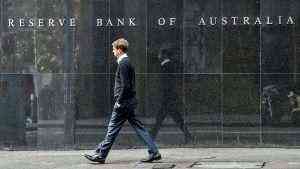
They represent some of the most familiar companies in global business, including household names such as Nokia, Royal Dutch Petroleum (maker of Shell gasoline), and Unilever. These and many other companies based outside the US list their shares on US exchanges through ADRs. Creating a new ADR involves buying the stocks of the foreign company in the issuer’s home market and depositing the acquired shares in a depository bank in the overseas market.
Big losses in Russia-linked stocks have investors rethinking other … – Reuters.com
Big losses in Russia-linked stocks have investors rethinking other ….
Posted: Sun, 13 Aug 2023 07:00:00 GMT [source]
However, dividend payments are net of currency conversion expenses and foreign taxes. Usually, the bank automatically withholds the necessary amount to cover expenses and foreign taxes. With these, https://investmentsanalysis.info/ an issuer floats a public offering of ADRs on a U.S. exchange. They can be used to establish a substantial trading presence in the U.S. financial markets and raise capital for the foreign issuer.
American Depositary Receipt Pricing and Costs
“It is the only way to invest in some of the best companies in the world – Diageo, Heineken, Volkswagen, Toyota,” Holmes says. Your brokerage firm may also charge fees on top the bank that holds the ADRs, according to Holmes Osborne, principal at Osborne Global Investors, a money management firm. Dividends are paid in American dollars but are still subject to foreign-tax withholding. An ADS, on the other hand, is the actual underlying share that the ADR represents. In other words, the ADS is the actual share available for trading, while the ADR represents a bundle of ADSs.

Such a practice makes it easy for US investors to invest in a foreign company without worrying about currency exchange rates. The US banks that deal with ADRs require the foreign companies to furnish them with their financial information, which investors use to determine the company’s financial health. Before the introduction of ADRs in 1927, investors in the US faced numerous metatrader 5 for mac hurdles when attempting to invest in stocks of foreign companies. American investors could purchase the shares on international exchanges only, and that meant dealing with currency exchange rates and regulatory differences in foreign jurisdictions. Dividends and gains earned on American depositary receipts are paid in U.S. dollars, net of expenses and foreign taxes.
Example of investing with an ADR
Level II sponsored ADRs can be listed on an exchange and are thus visible to a wider market. Level II ADRs, however, require the company to comply with the SEC. Level III sponsored ADRs permit the company to issue shares to raise capital but require the highest level of compliance and disclosure. Some banks require investors who hold ADRs to pay periodic services fees (sometimes called “custody fees”), which typically run between $0.01 to $0.03 per share. If you purchase a share from a company that’s based outside the U.S. on Robinhood, you can find information about any ADR fees that may apply on the website of the bank issuing the ADR. The ADRs now represent the local Russian shares held by the depository and can be freely traded on the NYSE and settled like any other transaction.

Investors may choose to apply a credit to their U.S. taxes or apply for a refund abroad to avoid double taxation. ADRs are grouped into three levels depending on the extent of the foreign company’s access to the US trading market. For a vast majority of people living in the United States, it doesn’t do a lot of good to find yourself on the receiving end of Australian dollars, South Korean won, or Mexican pesos.
Investor Information Menu
Companies that meet all US reporting and disclosure rules are permitted to raise capital directly from US investors by issuing new stock specifically to be represented by ADRs. Companies that meet a more limited set of SEC reporting requirements are permitted only to sponsor ADRs that represent shares previously issued in their home markets. The companies are not required to issue quarterly or annual reports like other publicly traded companies. However, Level I issuers must have their stock listed on one or more exchanges in the country of origin. Level I can be upgraded to Level II when the company is ready to sell through US exchanges. Level I is the lowest level at which sponsored ADRs can be issued.
- Level I is the lowest level at which sponsored ADRs can be issued.
- There are in excess of 2,000 ADRs trading on US exchanges, representing companies located in more than 70 countries.
- Also, the company must file Form-20-F in accordance with the GAAP or IFRS standards.
A sponsored ADR is an American depositary receipt (ADR) that a bank issues on behalf of a foreign company whose equity serves as the underlying asset. A sponsored ADR creates a legal relationship between the ADR and the foreign company, which absorbs the cost of issuing the security. Unsponsored ADRs can only trade on the over-the-counter market (OTC) while sponsored ADRs can be listed on major exchanges. ADRs are a simple way for American investors to add international companies’ stock to their portfolio.
What Is the Difference Between an ADR and a GDR?
They may also come with significant administrative fees in some cases. Depositary receipts help international companies raise capital globally and encourage international investment. Since this is the practice, American investors would need to seek a credit from the IRS or a refund from the foreign government’s taxing authority to avoid double taxation on any capital gains realized. ADRs are additionally categorized into three levels, depending on the extent to which the foreign company has accessed the U.S. markets. Securities and Exchange Commission and traded on national exchanges; however, some ADRs are not registered and traded on national exchanges. Investors purchase these non-registered ADRs directly from their issuers or through other private trades (i.e., “over the counter”).
- One particularly daunting roadblock is currency exchange issues.
- You may be able to avoid certain taxes involved in buying and selling securities in overseas markets.
- Dividends are paid in American dollars but are still subject to foreign-tax withholding.
- ADRs are a great way to buy shares in a foreign company while earning capital gains and possibly being paid dividends, which are cash payments by the companies to shareholders.
- The company must file Form F-1 (prospectus) and Form 20-F (annual reports) in accordance with GAAP or IFRS standards.
- In turn, the London bank issues shares in Britain based on the regulatory compliance for both countries.
Examples of foreign companies that have managed to enter this ADR level include Vodafone, Petrobras, and China Information Technology. The ADRs that are sold in US financial markets can be categorized into sponsored and unsponsored. These are called unsponsored ADRs, which have no direct involvement by the company. In fact, some companies may not even provide permission to list their shares this way.
Upgrading to a paid membership gives you access to our extensive collection of plug-and-play Templates designed to power your performance—as well as CFI’s full course catalog and accredited Certification Programs. In exchange for all of this, the commercial bank is going to assess an ADR fee in most cases. ADR fees are relatively small and are often assessed on a per ADR basis. They cover the bank’s expenses and lets them earn a reasonable profit on the service. To explain why ADR fees exist, we need to first look at how ADRs work, how they are structured, and why banks create them. As with any investment, there are distinct advantages and disadvantages of investing in ADRs.
Some ADRs may even represent a fraction of one of the company’s shares. The use of such ratios allows the ADRs to be priced at an amount more suitable to US market prices. This action causes the domestic Russian price and ADR price to reach parity.
